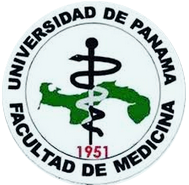Abscesos Hepáticos Piógenos Múltiples: ¿Una Patología Superada O Un Reto Médico Vigente?: Un Caso A Recordar
[Multiple Pyogenic Hepatic Multiple Liver Abscesses: An Outdated Pathology or An Ongoing Medical Challenge? A Case to Remember]José Felipe Reoyo Pascual1, Guillermo Cabriada1, Jesús Zanfaño2, Cristina González1, Esther García-Plata1, Rosa María Martínez1, Xandra Valero1, Miguel Álvarez1
1. Hospital Universitario De Burgos. España; 2. Hospital Universitario De Burgos. España..
Descargas
Resumen
El absceso hepático piógeno es una patología que aún en nuestros días supone un reto médico, ya que su curso clínico suele ser grave, el diagnóstico frecuentemente tardío y la mortalidad elevada. En las últimas décadas hemos asistido a diversos avances, como la introducción de los antibióticos de amplio espectro y el desarrollo de técnicas de imagen e intervencionistas que han mejorado la eficacia diagnóstica y el pronóstico de esta patología. Pese a ello, la presencia de abscesos hepáticos piógenos múltiples no es una patología superada y presentamos un caso clínico que ilustre esta patología y justifique que ha de tenerse en cuenta en el arsenal diagnóstico para poder tratarlo precozmente y disminuir así su alta morbimortalidad.
Abstract
Pyogenic liver abscess is a pathology that still poses a medical challenge today, since its clinical course is usually severe, diagnosis is often late, and mortality is high. In recent decades we have witnessed several advances, such as the introduction of broad-spectrum antibiotics and the development of imaging and interventional techniques that have improved the diagnostic efficacy and prognosis of this pathology. Despite this, the presence of multiple pyogenic liver abscesses is not a pathology that has been overcome and we present a clinical case that illustrates this pathology and justifies that it must be considered in the diagnostic arsenal in order to treat it early and thus reduce its high morbimortality.
Citas
[1] Shackelford RT, Zuidema GD, Yeo ChJ. Cirugía del Aparato Digestivo. 5a. Ed. Buenos Aires: Panamericana; 2005, p. 553-78.
[2] Johannsen EC, Sifri CD, Madoff LC. Pyogenic liver abscesses. Infect Dis Clin North Am 2000; 14: 547-563. DOI: https://doi.org/10.1016/S0891-5520(05)70120-3
[3] Álvarez Pérez JA et al.- Abscesos hepáticos piógenos. Cir Esp 2001; 70: 164-172. DOI: https://doi.org/10.1016/S0009-739X(01)71869-6
[4] Matthews JB, Gertsch P, Baer HU, Blumgart LH. Hepatic abscess after biliary tract procedures. Surg Gynecol Obstet 1990; 170: 469-475.
[5] Barrio J, Cosme A, Ojeda E, Garmendia G, Castiella A, Bujanda L et al. Abscesos hepáticos piógenos de origen bacteriano. Estudio de una serie de 45 casos. Rev Esp. Enf Digest 2000; 92: 232-235.
[6] Chiche L, Dargère S, Le Pennec V, Dufay C, Alkofer B. Pyogenic-liver abscess: diagnosis and management. Gastroenterol Clin Biol. 2008; 32 (12): 1077-91. DOI:https://doi.org/10.1016/j.gcb.2008.09.019
[7] López-Cano Gómez M, Laguna del Estal P, García Montero P, Gil Navarro M, Castañeda Pastor A. Pyogenic liver abscess: clinical presentation and predictors of unfavorable outcome. Gastroenterol Hepatol. 2012; 35 (4): 229-35. DOI:https://doi.org/10.1159/000188047
[8] Motta Ramírez GA, Blancas Erika A, Chirino Sprung RA, González-Merino Lluvia I. Caracterización de lesiones hepáticas focales con tomografía computada multidetector. An Radiol Méx. 2012; 12 (1): 46-58.
[9] Maple JT, Ben-Menachem T, Anderson MA, Appalaneni V, Banerjee S, Cash BD, et al; ASGE Standards of Practice Committee. The role of endoscopy in the evaluation of suspected choledocholithiasis. Gastrointest Endosc. 2010; 71 (1): 1-9.
[10] Mezhir JJ, Fong Y, Jacks LM, Getrajdman GI, Brody LA, Covey AM, et al. Current management of pyogenic liver abscess: surgery is now second-line treatment. J Am Coll Surg. 2010; 210 (6): 975-83. DOI: https://doi.org/10.1016/j.jamcollsurg.2010.03.004
Licencia
Derechos de autor 2021 Infomedic Intl.Derechos autoriales y de reproducibilidad. La Revista Médica de Panama es un ente académico, sin fines de lucro, que forma parte de la Academia Panameña de Medicina y Cirugía. Sus publicaciones son de tipo acceso gratuito de su contenido para uso individual y académico, sin restricción. Los derechos autoriales de cada artículo son retenidos por sus autores. Al Publicar en la Revista, el autor otorga Licencia permanente, exclusiva, e irrevocable a la Sociedad para la edición del manuscrito, y otorga a la empresa editorial, Infomedic International Licencia de uso de distribución, indexación y comercial exclusiva, permanente e irrevocable de su contenido y para la generación de productos y servicios derivados del mismo. En caso que el autor obtenga la licencia CC BY, el artículo y sus derivados son de libre acceso y distribución.









